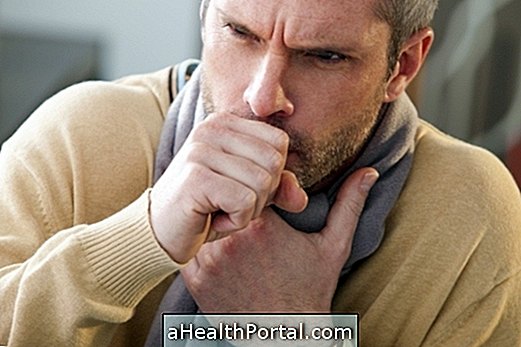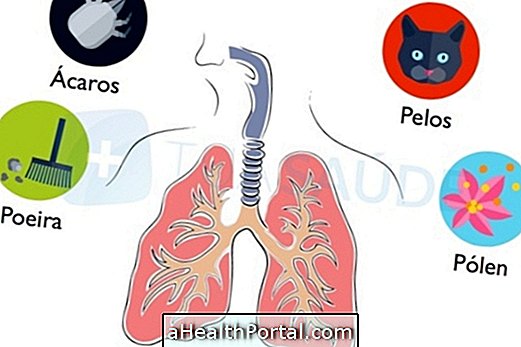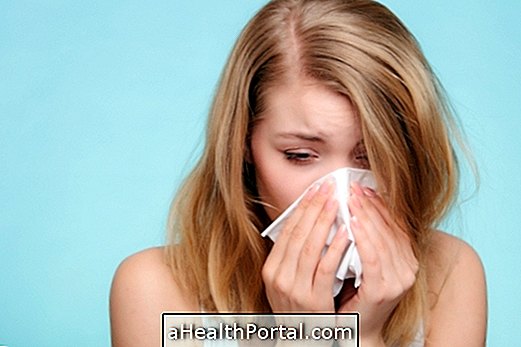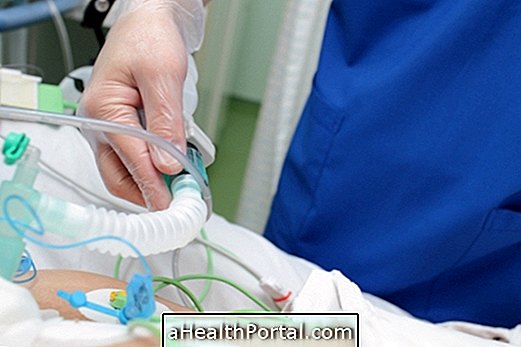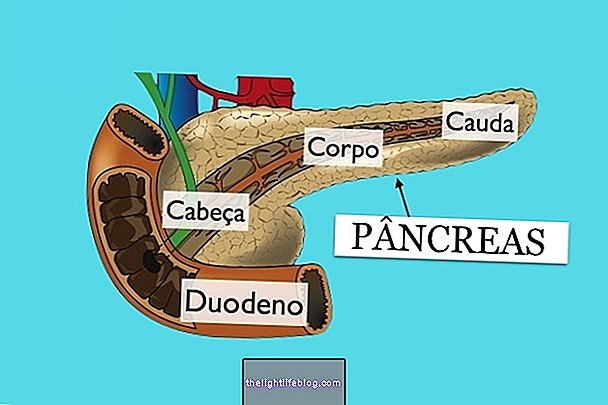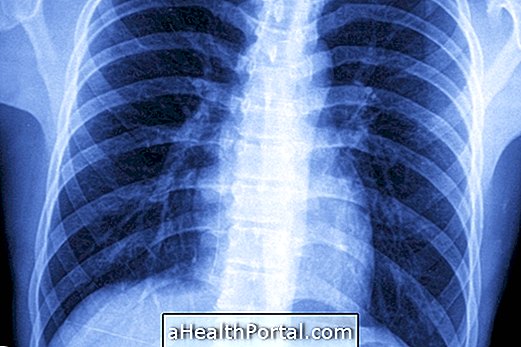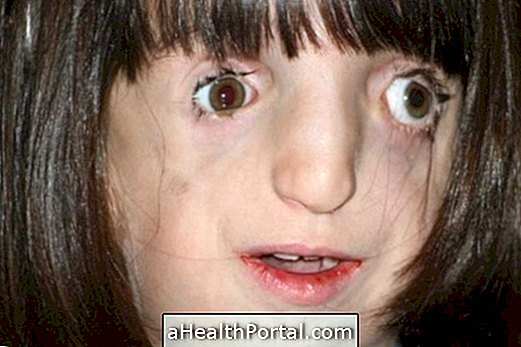The flu can become pneumonia due to the worsening influenza, when the secretions filled with the Influenza virus reach the deeper parts of the lung, the alveoli, where oxygen exchanges occur, which greatly impairs respiration and consequently there is less oxygen in all the tissues of the body.
Signs and symptoms that can indicate a pneumonia include high fever and difficulty breathing, being common cough with greenish or rusty phlegm. This disease is diagnosed by the pulmonologist based on symptoms and examinations such as pulmonary auscultation and chest x-ray and when the doctor detects the infection in different regions of the lung the disease is called Bronchopneumonia.
Your treatment should be started as soon as possible and can be done with antiviral drugs or antibiotics and use of an oxygen mask at home or at the hospital.

Symptoms of Pneumonia
The symptoms of pneumonia may come on suddenly or may come after a flu that lasts for many days. The symptoms of pneumonia are:
- Cough initially dry, but worsens and presents phlegm with greenish color or rust color;
- Excessive tiredness;
- Chest pain;
- Chills;
- High fever, greater than 39ºC;
- Breathing short and fast;
- The tips of the fingers and the lips can become purplish.
When observing these symptoms it is necessary to go to the pulmonologist to make examinations, like chest x-ray, blood examination and the exam of sputum, in order to start to identify the disease and to start the appropriate treatment.

Although anyone can get pneumonia, it is more common in children, the elderly, patients who are being treated for AIDS, cancer, or who have a respiratory disease such as asthma, for example.
Why Babies Are at More Risk for Pneumonia
Babies are more likely to develop pneumonia after a flu because their immunity is not as good as that of an adult and also because a small amount of virus is enough to cause major complications.
To know if the baby has pneumonia, it should be observed if there are symptoms such as cough with phlegm, high fever, lack of appetite, apathy and easy crying and therefore should be evaluated by a pediatrician.
To help with the treatment of childhood pneumonia parents should avoid taking the child or baby from home, dressing it according to the season, avoiding sudden changes in temperature or places with too many people or smoke. Going to daycare is discouraged because there is a risk of contaminating other children.
How To Treat a Flu That Turned Pneumonia
The treatment for pneumonia can last up to 2 weeks, being done with antibiotics like Amoxicillin, Azithromycin, Clarithromycin, Ceftriaxone or Levofloxacin.
During treatment, the individual should remain at home, avoid going to work or school, drinking lots of water and eating normally, and may experience improvement of symptoms between the 3rd and 4th day of treatment.
In more severe cases, it may be necessary to be hospitalized for an oxygen mask or respiratory physiotherapy, and the treatment time varies between 14 and 21 days and can be prolonged for longer. Here are some examples of breathing exercises: 5 exercises to breathe better after surgery.
Flu vaccine also protects against pneumonia
To protect and prevent the flu, and consequently viral pneumonia, it is recommended that all children, the elderly and people with compromised immune systems, as well as those with chronic diseases such as asthma and diabetes, take the flu vaccine every year because the virus is a bit different every year.
Can help with treatment:
- Home remedy for pneumonia
- Pneumonia teas
- Strawberry juice for pneumonia
